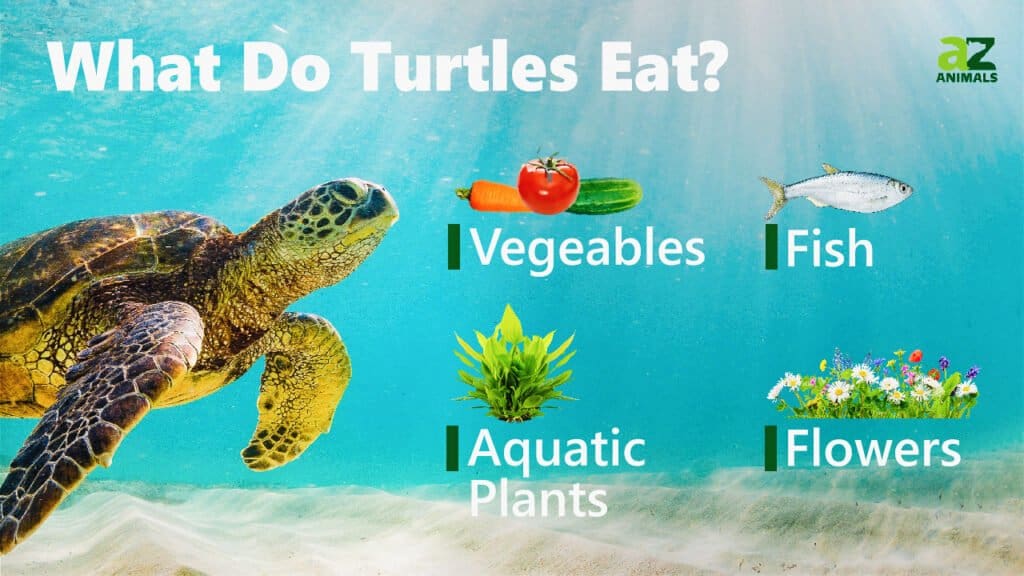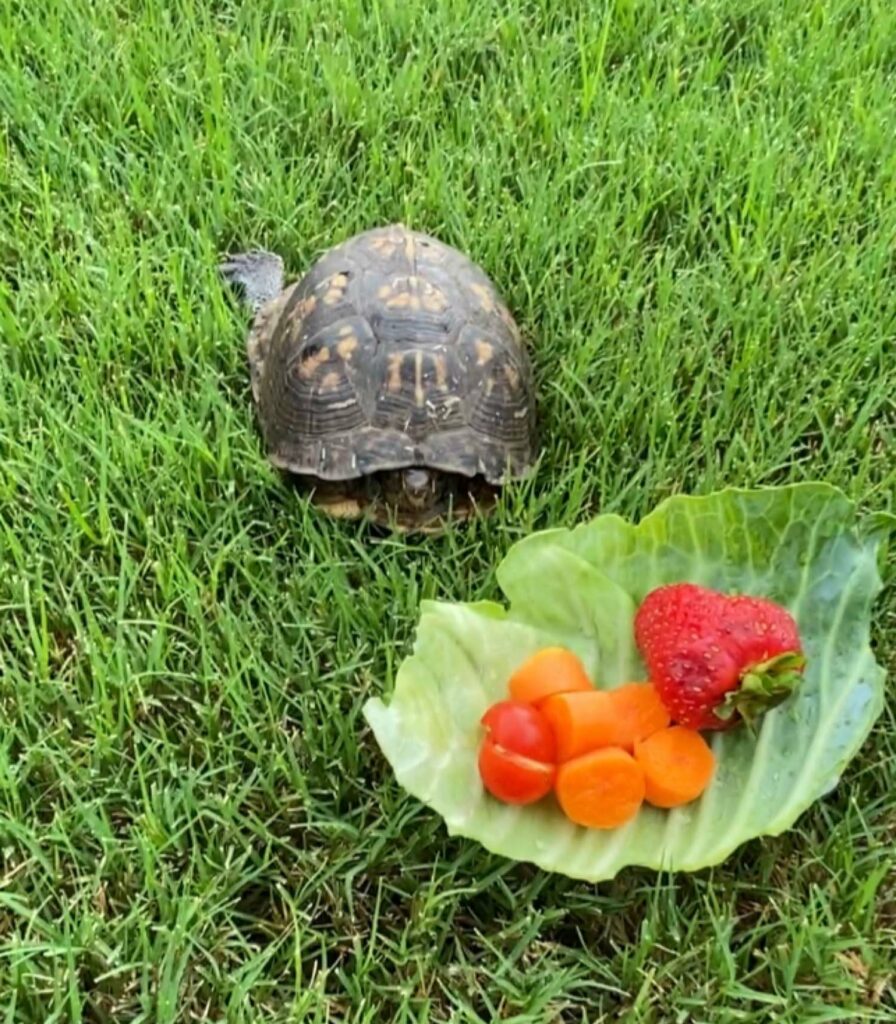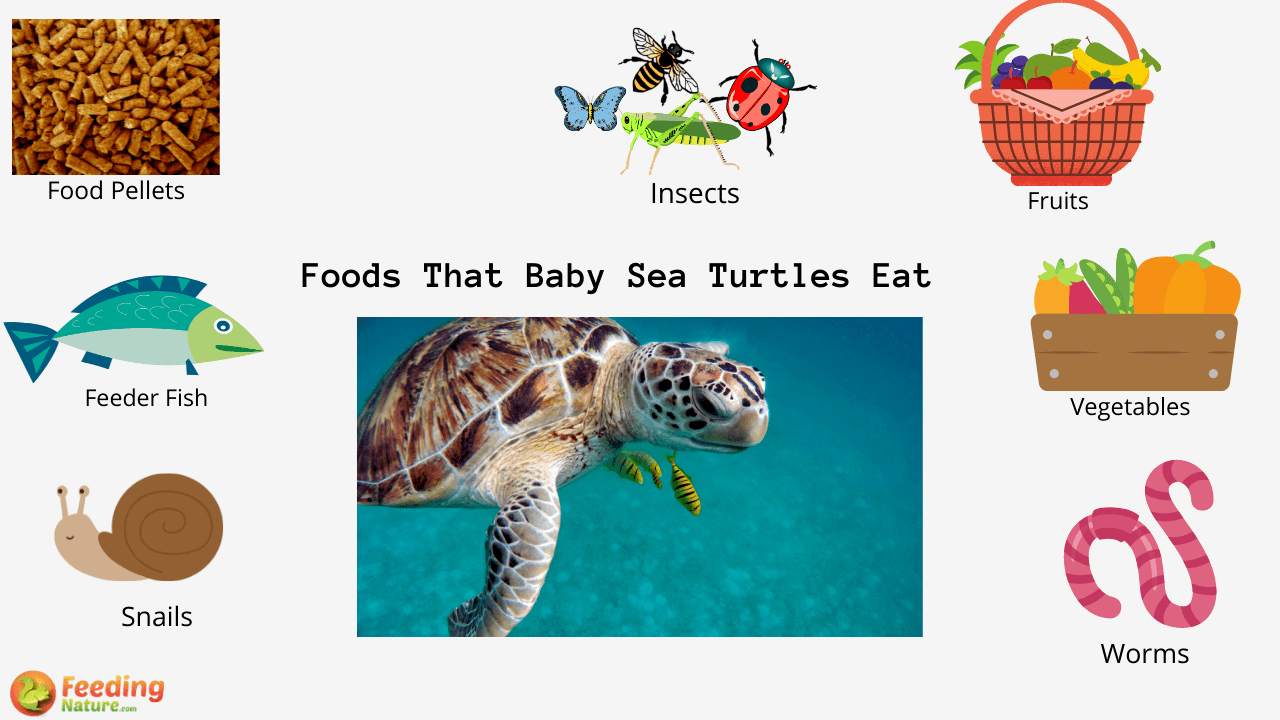What Do Turtles Eat? A Deep Dive into the Diet of These Fascinating Creatures
Turtles are intriguing creatures that have roamed the Earth for millions of years. As diverse as they are ancient, turtles come in various species, each with unique dietary needs. Understanding what turtles eat is crucial for their survival and well-being, whether they are living in the wild or kept as pets.
Key Takeaways
- Turtles’ diets vary significantly based on their species and habitat.
- Most turtles are either omnivorous or herbivorous, with a few being strictly carnivorous.
- Proper nutrition is essential for turtles’ health, growth, and longevity.
- Feeding pet turtles requires careful consideration of their natural diet and nutritional needs.
The Diverse Diets of Turtles
Turtles inhabit a wide range of environments, from oceans and rivers to forests and deserts. Consequently, their diets have evolved to suit their habitats. The dietary preferences of turtles can be broadly categorized into three groups: carnivorous, herbivorous, and omnivorous.
Carnivorous Turtles
Carnivorous turtles primarily consume animal matter. These turtles often have sharp, pointed beaks to help them catch and consume their prey. Common prey items include:
- Fish
- Insects
- Crustaceans
- Mollusks
One of the most well-known carnivorous turtles is the snapping turtle, which is notorious for its aggressive hunting behavior and powerful bite.
Herbivorous Turtles
Herbivorous turtles primarily feed on plant matter. These turtles have flat, serrated beaks that are perfect for tearing and chewing vegetation. Their diet typically includes:

- Algae
- Leaves
- Grasses
- Fruits
- Flowers
The green sea turtle is a prime example of a herbivorous turtle, grazing on seagrass and algae in oceanic environments.
Omnivorous Turtles
Omnivorous turtles enjoy a varied diet consisting of both animal and plant matter. This flexibility allows them to adapt to different environments and food availability. Their diet can include:
- Small fish and insects
- Fruits and vegetables
- Algae and aquatic plants

The red-eared slider is a popular pet turtle that exemplifies omnivorous feeding habits, often thriving on a balanced diet of commercial turtle pellets, leafy greens, and occasional protein sources.
Feeding Pet Turtles: What You Need to Know

Providing a balanced diet is crucial for the health and longevity of pet turtles. When feeding pet turtles, it is essential to consider their species-specific dietary needs and replicate their natural diet as closely as possible.
Commercial Turtle Food
Commercial turtle pellets are widely available and can provide a convenient and balanced diet for pet turtles. These pellets are formulated to meet the nutritional requirements of most turtle species, containing a mix of proteins, vitamins, and minerals.
Fresh Foods
In addition to commercial food, offering fresh foods can enhance your turtle’s diet. Consider incorporating the following:
- Leafy Greens: Kale, collard greens, and dandelion greens are excellent choices.
- Vegetables: Carrots, bell peppers, and squash can provide essential vitamins.
- Fruits: Apples, berries, and melons can be given as occasional treats.
- Protein Sources: Small amounts of cooked chicken, fish, or insects can supplement their diet.
Calcium and Vitamin Supplements
Calcium is vital for turtles, especially for shell development. Providing a calcium supplement, such as cuttlebone or calcium powder, can prevent deficiencies. Vitamin supplements can also be beneficial, but it is important to consult a veterinarian to determine the appropriate dosage and frequency.
Understanding the Nutritional Needs of Turtles
Each turtle species has unique nutritional needs based on its natural habitat and lifestyle. To ensure your turtle receives a balanced diet, consider these general guidelines:
Protein Intake
Protein is essential for growth and maintenance, particularly for juvenile turtles. Carnivorous and omnivorous turtles require higher protein levels, while herbivorous turtles need less.
Calcium and Phosphorus Balance
A proper calcium-to-phosphorus ratio is crucial for bone and shell health. Aim for a ratio of 2:1, with calcium being more abundant. This can be achieved through diet and supplements.

Hydration and Water Quality
Access to clean water is vital for turtles, both for drinking and swimming. Ensure your turtle’s habitat includes a water source that is regularly cleaned and maintained.
Understanding what turtles eat is essential for their well-being, whether they are roaming in the wild or living in a home aquarium. By providing a diet that closely mimics their natural food sources, you can ensure your turtle thrives. Always consider the specific dietary needs of your turtle species and consult with a veterinarian for personalized advice. With the right care and nutrition, turtles can live long, healthy lives, bringing joy and fascination to those who care for them.